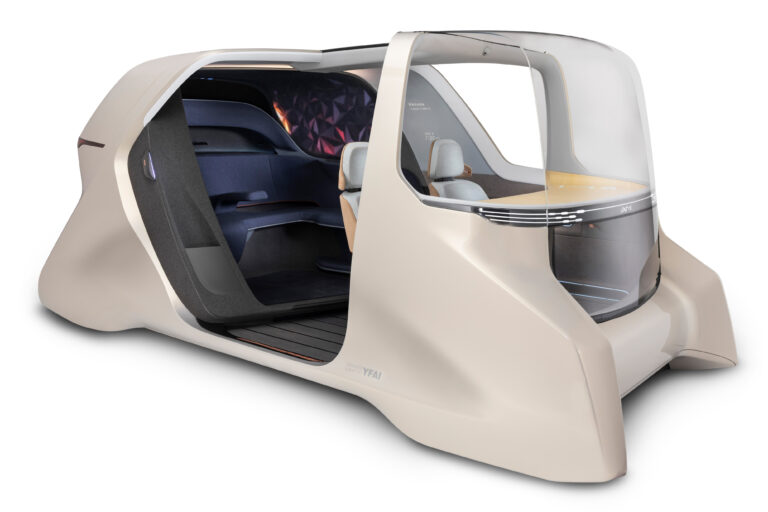Hidden displays and self-cleaning surfaces are just a few of the features the car interior of the future could offer passengers as fully autonomous shared mobility solutions continue to be developed.
Yanfeng Automotive Interiors, an automotive interior supplier, has unveiled a rideshare concept called the Experience in Motion demonstrator 2020 (XiM20). The pod-like vehicle features a dual-zone layout with an airy space at the front with two seats offering views through the large curved windshield, and at the rear there is a lounge-like cocoon for privacy.
The interior concept has the ability to customize its experience to the passenger’s journey through an array of technology including smart surfaces. Controls for the interior environment are accessible on a natural wood smart surface table that has climate, audio and navigation functions. It also has a UV surface sanitizer, which, at the press of a button, uses UV frequency light that sweeps over the interior to disinfect surfaces that have been touched by the previous occupant.
When not in use, these controls disappear, and the surface takes the appearance of a typical table. According to Yanfeng, the idea is to create a zone that is reminiscent of a café or coffee house bar.
“Approaching this next iteration of the XiM demonstrator, we knew it was critical to evaluate users’ wants and needs within the vehicle and outside of the mobility context,” said Han Hendriks, chief technology officer at Yanfeng Automotive Interiors. “The insights gleaned from our research defined what impacts consumers’ quality of life and what creates memorable, engaging experiences. With the XiM20, advanced technologies and product innovations complement intuitive design, providing flexibility and comfort for the autonomous rideshare passengers of tomorrow.”
With those passengers of tomorrow not having to take the wheel, they can relax in the rear of the XIM20, where it offers a cozy, secluded booth that is able to complement the occupant’s mood. It uses in-cabin sensing developed by IEE to create an ambience through entertainment and active lighting to communicate and mimic the passenger’s feelings.
An integrated display featuring ride information and notifications is also present, providing navigation updates and alerting passengers when they are approaching their destination to prepare for arrival and gather their belongings.
“To design and develop interiors in this context, we needed to understand and craft experiences that are engaging and surprising, without being overly complex. For future mobility, this is where the opportunity lies.” added Hendriks.


